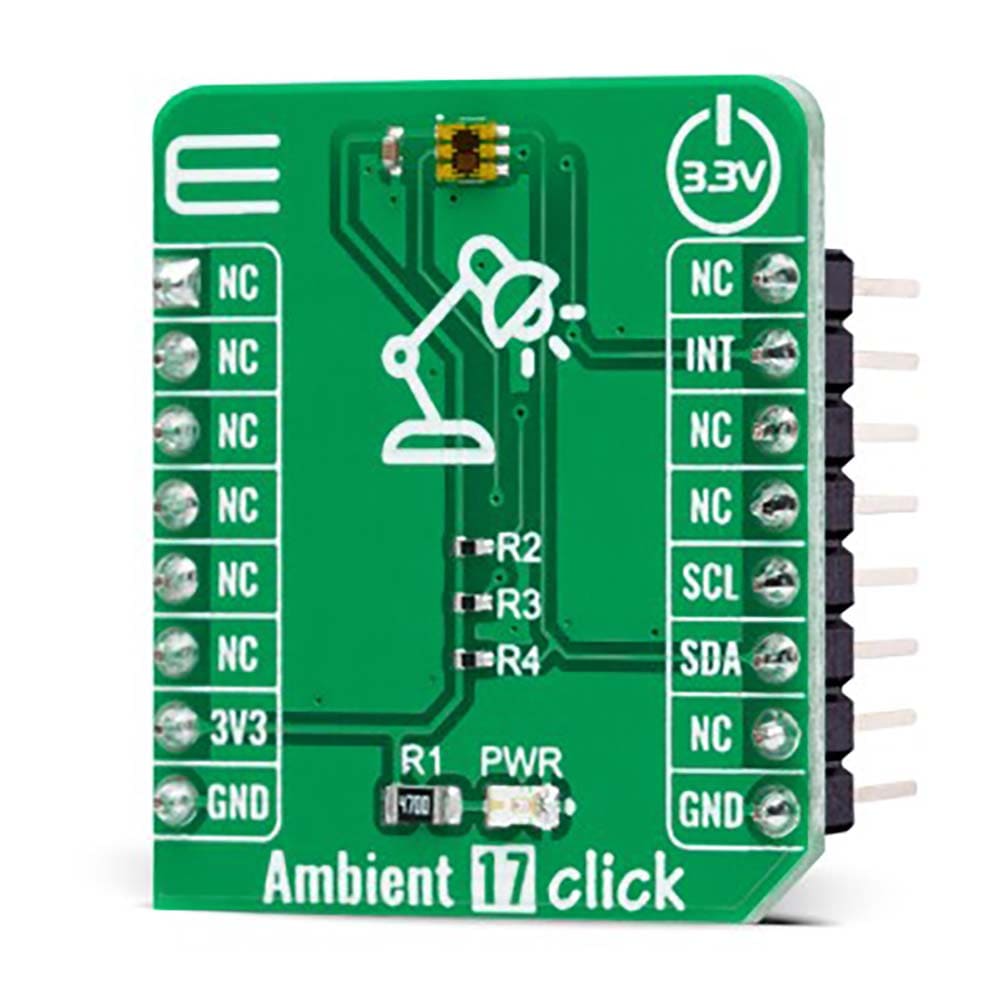
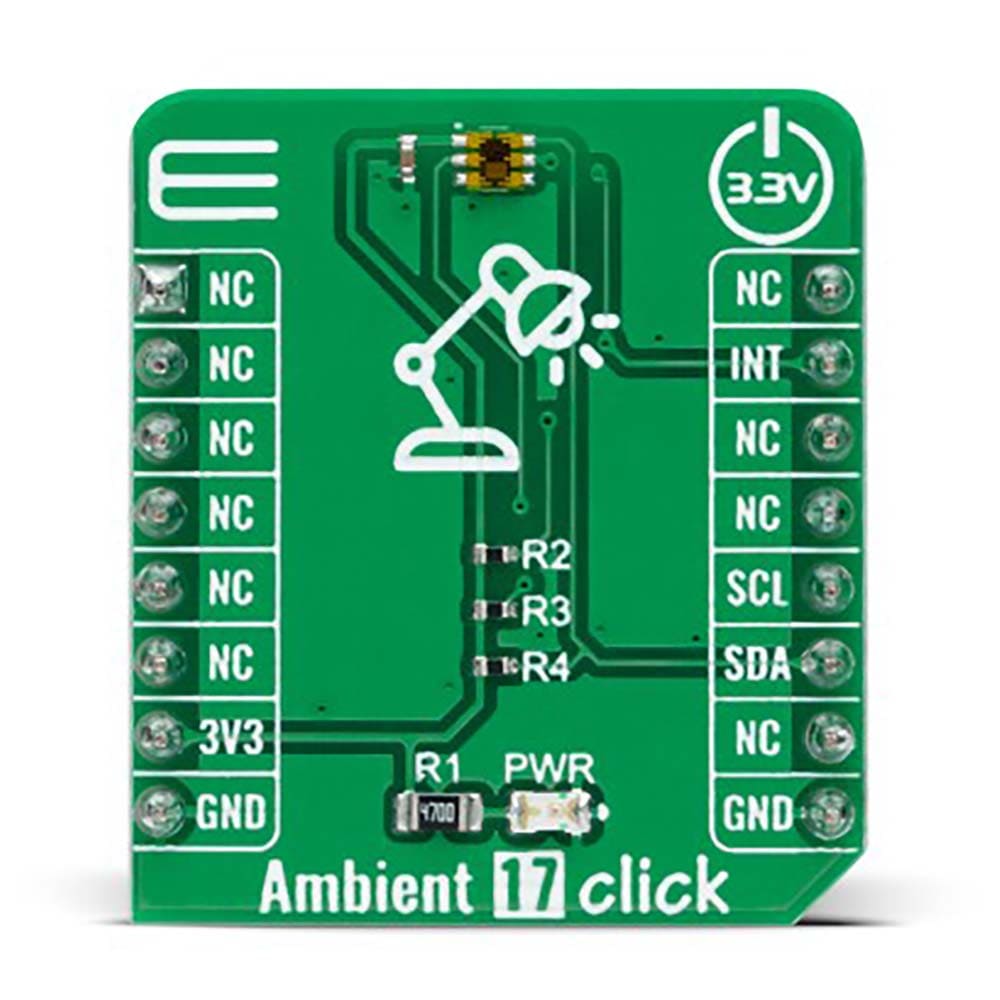
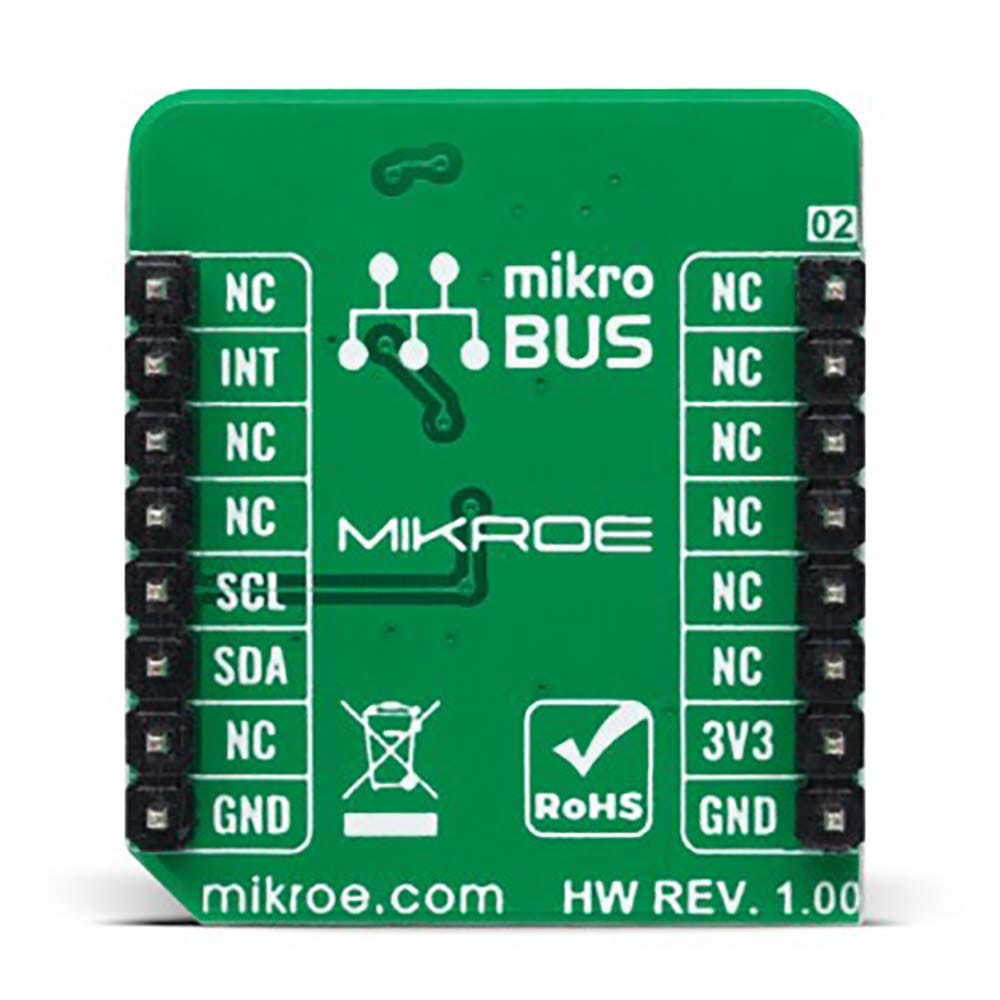
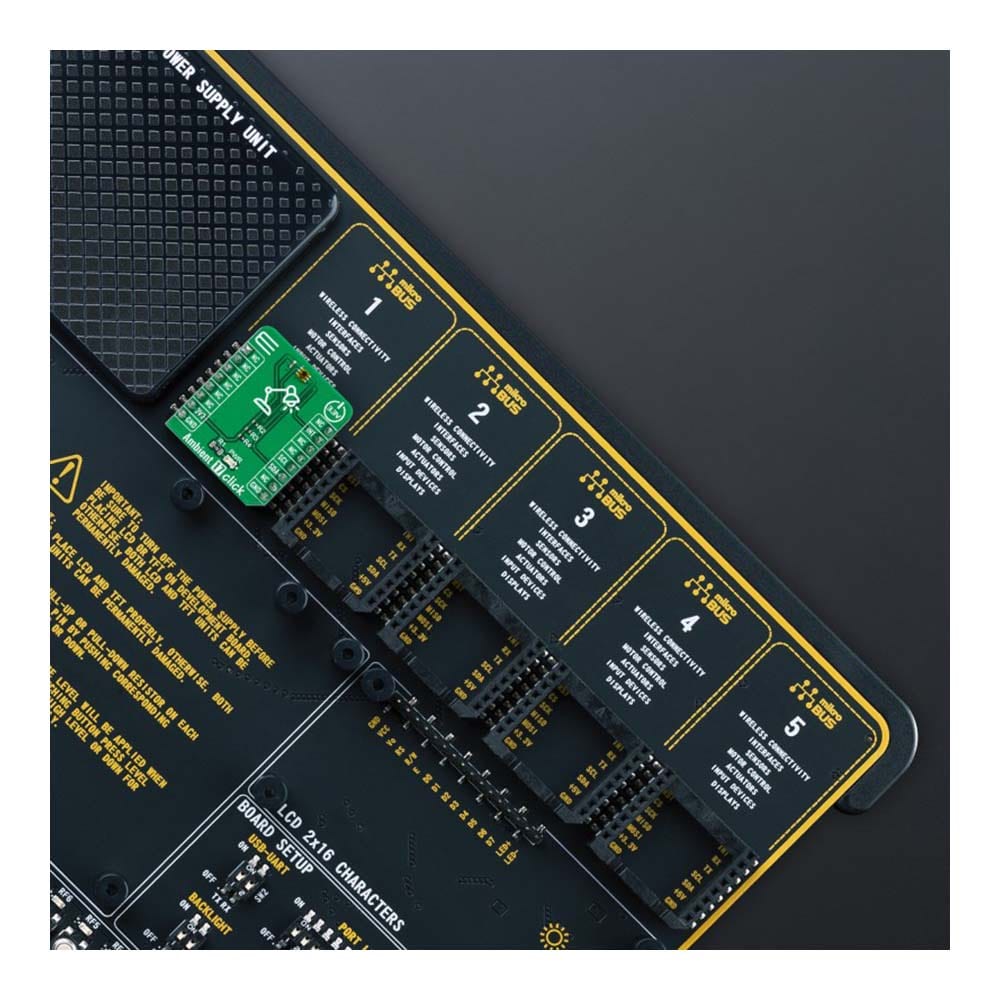

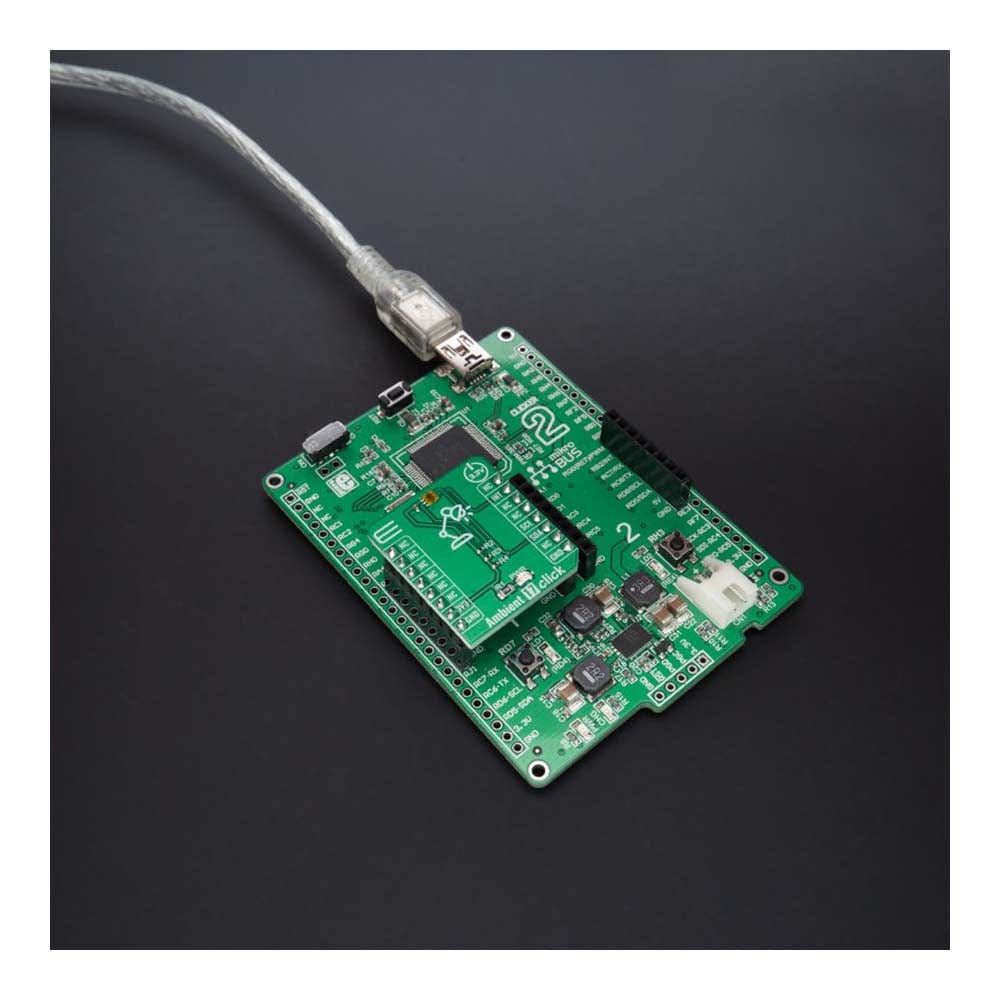
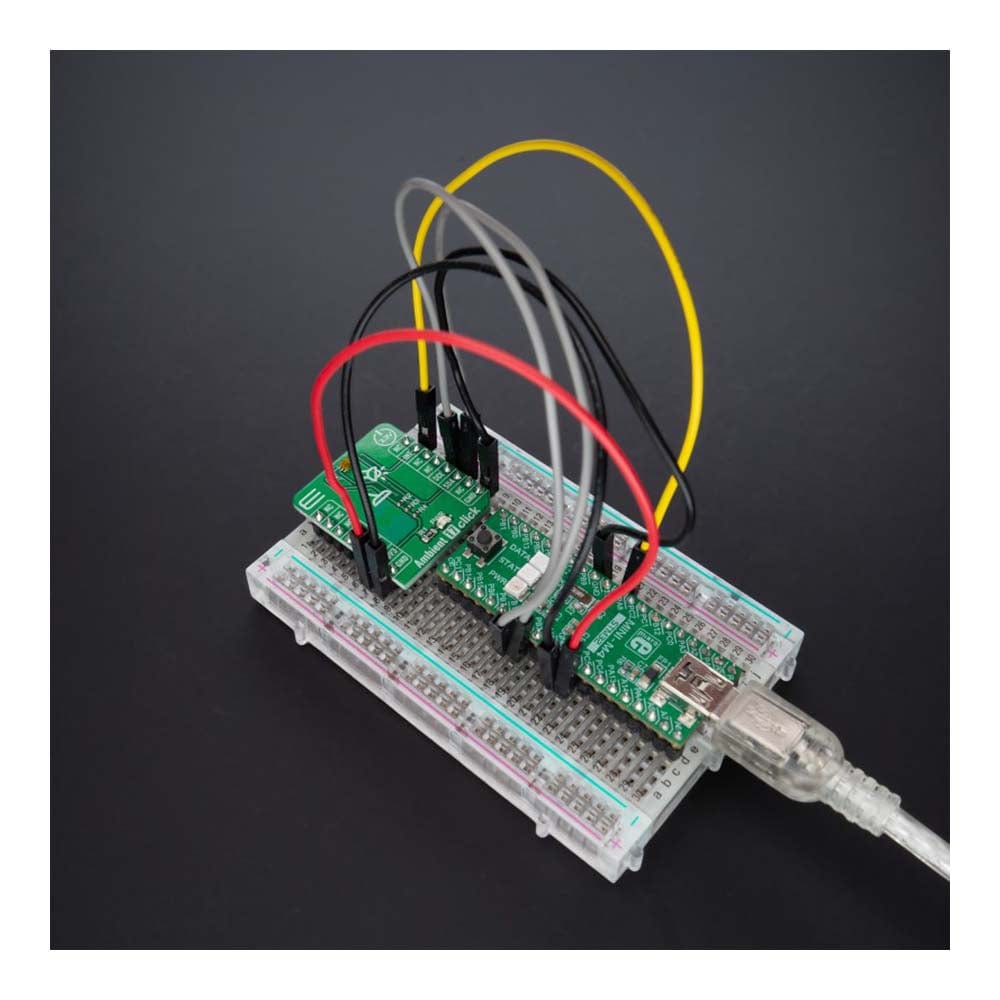
Key Features
Overview
The Ambient 17 Click Board™ is a compact add-on board used to measure the amount of the present ambient light. This board features the TSL2572, a digital-output ambient light sensor with an I2C interface from AMS AG. The TSL2572 can detect a wide range of illuminance up to 60klx and provides excellent responsivity close to the human eyes' response. It is designed to control the brightness in various applications based on ambient light availability, brightness for optimum visibility, and energy efficiency. Operation in a temperature range of -30°C to 70°C ensures stable operation under extreme conditions. This Click board™ is the most suitable for obtaining ambient light data for adjusting brightness in applications that require power saving and better visibility.
The Ambient 17 Click Board™ is supported by a mikroSDK compliant library, which includes functions that simplify software development. This Click board™ comes as a fully tested product, ready to be used on a system equipped with the mikroBUS™ socket.
Downloads
L' Ambient 17 Click Board™ est une carte complémentaire compacte utilisée pour mesurer la quantité de lumière ambiante présente. Cette carte est équipée du TSL2572, un capteur de lumière ambiante à sortie numérique avec une interface I2C d'AMS AG. Le TSL2572 peut détecter une large plage d'éclairement jusqu'à 60 klx et offre une excellente réactivité proche de la réponse de l'œil humain. Il est conçu pour contrôler la luminosité dans diverses applications en fonction de la disponibilité de la lumière ambiante, de la luminosité pour une visibilité optimale et de l'efficacité énergétique. Le fonctionnement dans une plage de températures de -30 °C à 70 °C garantit un fonctionnement stable dans des conditions extrêmes. Cette carte Click™ est la plus adaptée pour obtenir des données de lumière ambiante afin de régler la luminosité dans les applications qui nécessitent des économies d'énergie et une meilleure visibilité.
L' Ambient 17 Click Board™ est pris en charge par une bibliothèque compatible mikroSDK, qui comprend des fonctions qui simplifient le développement logiciel. Cette Click board™ est un produit entièrement testé, prêt à être utilisé sur un système équipé du socket mikroBUS™.
| General Information | |
|---|---|
Part Number (SKU) |
MIKROE-5106
|
Manufacturer |
|
| Physical and Mechanical | |
Weight |
0.02 kg
|
| Other | |
Country of Origin |
|
HS Code Customs Tariff code
|
|
EAN |
8606027388996
|
Warranty |
|
Frequently Asked Questions
Have a Question?
Be the first to ask a question about this.







